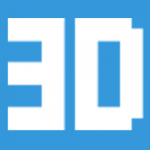Hello Megatron
Alignment of a 3D printer build plate is the first thing to be done before printing any job. Even if you think that plate is aligned, it still pays to check it once again. It is that important to get a quality print.
Alignment ensures that your build plate is at the correct distance from your extrusion head at all the points on the plate. Which in turn ensures accuracy of the print without any distortions.
Alignment is done with the help of built in functions of the printer or manually as per your model. All the printers come with specific instructions on how to align the build plate.
The goal of the exercise is to bring your printer head or extrusion nozzle nearest to various points on the build plate, preferably starting at center and then towards four corners. One should be able to insert a sheet of paper between plate and nozzle. If you are unable to or if you feel that the gap is more, then you can adjust the distance by tightening or loosening the screws nearest to the printer head. Most of the build plates have a minimum of three screws which are meant for alignment of the plate.
It should be kept in mind that this process is a trial and error process and requires a lot of patience.


